Which is the fastest road bike of 2021 and where are the bikes of the pros heading? In our test, the 5 fastest road bikes of the season are pitted against each other – the fastest test we have ever done. We tell you everything you need to know when it comes to pure speed.
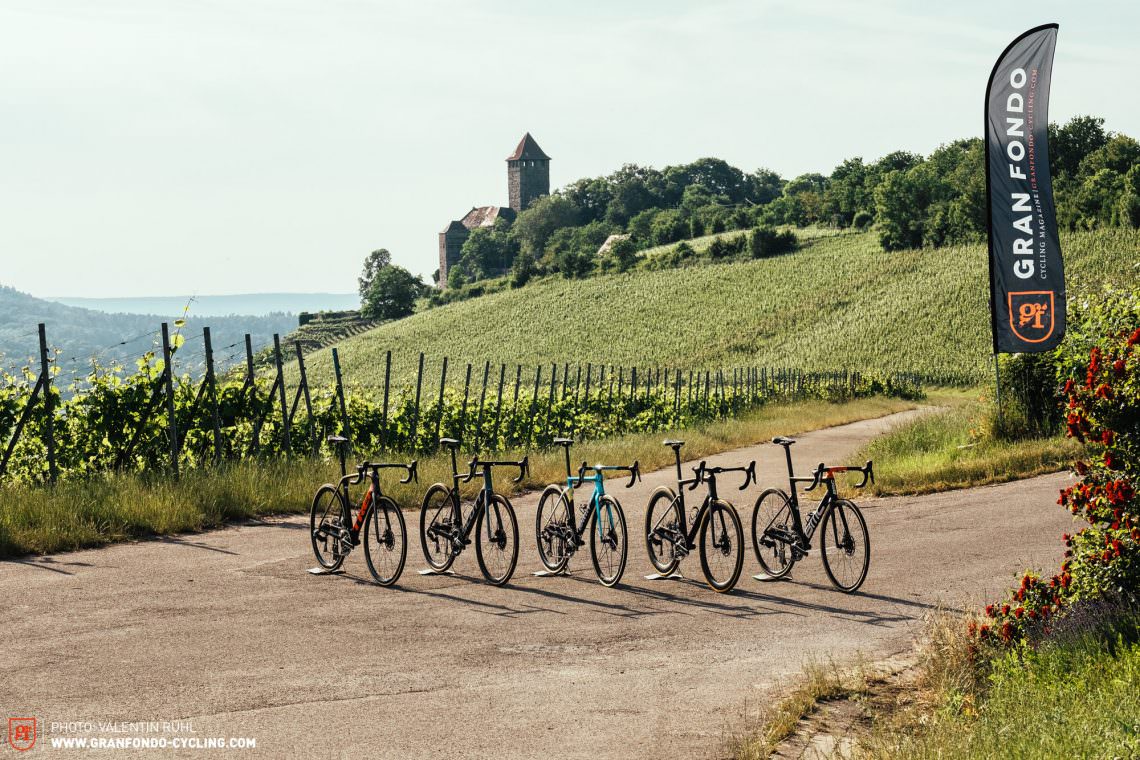
Table of content
- The testfield
- Where did we test?
- What does it depend on?
- Who did the testing?
- The fastest road bike in this test
- The competition
Wait a minute, you might be thinking. Weren’t we recently on the white roads of Tuscany looking for the best road bike of 2021? A true all-rounder? A bike that makes all your wildest n+1 dreams superfluous, that reliably takes you to your destination on every ride, no matter what the surface and terrain? At the time, the Specialized S-Works Aethos won and we concluded that it was the best road bike of the year. How did we drift from “A bike for all occasions” to “We’re looking for a speed weapon that is virtually useless for anything else” within a few months? For us, it’s clear: all-rounders with modern geometry, intuitive handling, a decent level of comfort and an extra dose of confidence are the right choice for 99% of us in 99% of cases. But what about that last percent? What if you want to turn yourself completely inside out and get everything out with your legs screaming with lactate? Shouldn’t your bike be just as extreme as what you demand from your body? Inspired by monumental battles in the Giro d’Italia, Tour de France and Vuelta a España, we took out the stopwatch and set off. We asked ourselves what influence the bike has on determining victory or defeat – carpe secundum!
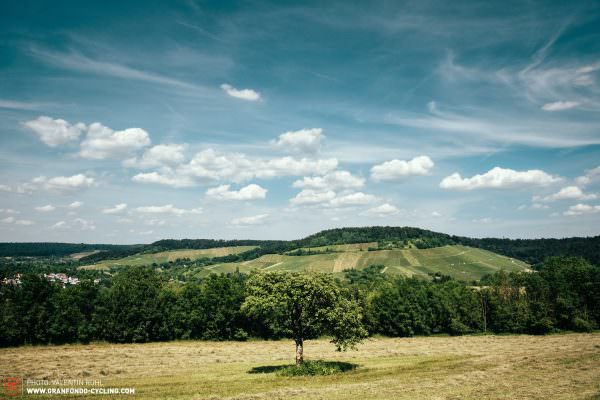
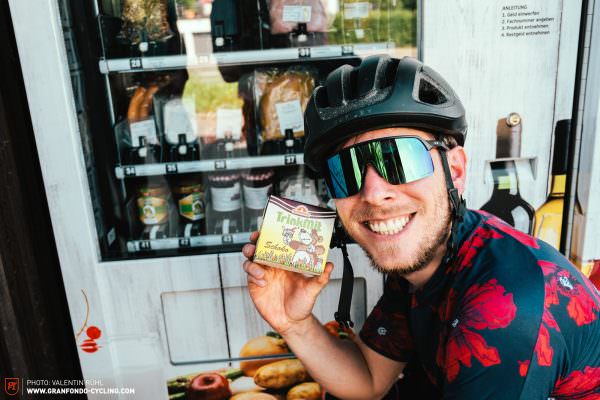
Alpe d’Huez or Champs-Élysées, local mountain climb or town sign sprint – these bikes aren’t just made for climbing or sprinting, they can do both. We are looking for the best speed all-rounder!
But there are also quite rational reasons for testing the fastest bikes, beyond a need for speed and enthusiasm for professional cycling. We see parallels between all-round bikes and the fastest race bikes on the planet because in both cases there are the real all-rounders. The time when you had to choose between an aero bike for flat rides and a lightweight climbing bike for the mountains is over. As a result, the distinction between aero bike and climbing bike is becoming increasingly blurred. The reason: nowadays most manufacturers manage to get very close to the weight minimum specified by the UCI, even with aerodynamic tube shapes that have long been considered heavy. Some even come in under, with the UCI limit being made up by strategically adding weights in the bottom bracket, benefiting the weight distribution and centre of gravity. And those who don’t ride official races are simply happy about a lighter bike. Thanks to this recent triumph of aerodynamics, there is no longer any need to distinguish between the two genres of aero and climbing bikes or to have to choose from one of the two. This engenders several advantages. Riders no longer have to decide on which terrain they have the best chance of success with which bike, while bike manufacturers can provide their teams with fewer bikes and thus save money not only in development but also in equipping the teams.
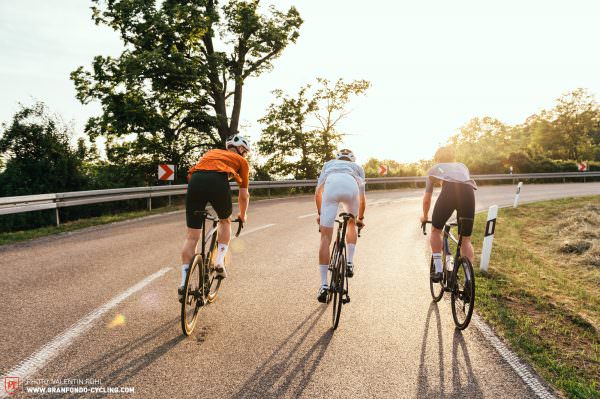
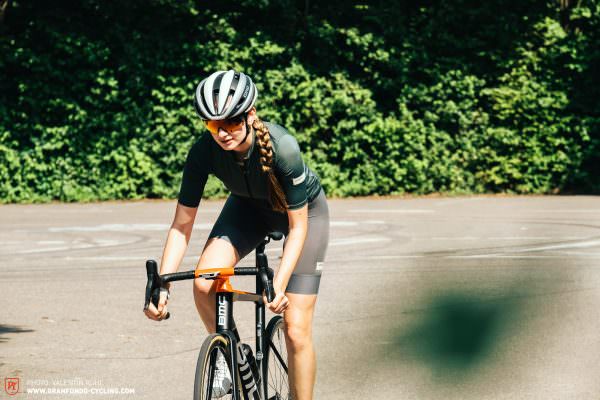
What have we tested? The fastest 2021 race bikes in the test
Modern race bikes combine low weight and refined aerodynamics. They are thoroughbred speed all-rounders with which you can win anything: the prestigious local sprint, the battle for the closest KOM or even an actual race. We see it as our task to identify the fastest bike of this new high-performance genre and have tested its most important representatives. The criteria were as clear as they were simple: manufacturers were to send us their speed all-rounders. Light, aerodynamically optimised and with maximum integration. In addition, the bikes should be off-the-shelf i.e. no customisation and just like you can buy them from the shop. Some of the most important bike brands heeded our call. Only the Astana-Premier Tech Team Edition Wilier Filante SLR came with an upgrade in the form of the Corima wheels, which you would have to buy separately. Otherwise, the only permitted upgrade was a power meter, if not already fitted as standard. It’s not hugely surprising that all the test bikes can also be found in the WorldTour. After all, they are the fastest race bikes on the planet.


Light and aerodynamic – These are the two most important features of a modern race bike.
We have never before had a test field that, on paper, has so little to differentiate between its candidates. Tubeless tires weren’t to be found, confirming our assessment from the last group test that tubeless isn’t yet mature for narrow 700 x 25C tires running at high pressure and still leads to problems here. Instead, all bikes except the Wilier Filante SLR, which started with a tubular setup, relied on clinchers with inner tubes. Despite very similar specifications on paper, our test bikes revealed very different characters. You can find an overview of the fastest race bikes of 2021 and their specs in the table below:
| Model | Groupset | Tire size | Weight | Price |
|---|---|---|---|---|
| BMC Teammachine SLR01 ONE (Click for review) |
SRAM RED eTap AXS GS-RED-E-B1 | 700 x 25C | 6.86 kg [56] | € 10,099 |
| SCOTT Addict RC Pro (Click for review) |
Shimano DURA-ACE Di2 R9150 | 700 x 28C | 6.99 kg [L] | € 8,499 |
| Specialized S-Works Tarmac SL7 (Click for review) |
SRAM RED eTap AXS GS-RED-E-B1 | 700 x 26C | 6.93 kg [56] | € 12,799 |
| Trek Émonda SLR 9 eTap (Click for review) |
SRAM RED eTap AXS GS-RED-E-B1 | 700 x 25C | 6.86 kg [56] | € 13,799 |
| Wilier Filante SLR Astana-Premier Tech Team Edition (Click for review) |
Shimano DURA-ACE Di2 R9150 | 700 x 28C | 6.70 kg [L] | € 14,500 |
| Ø 6.87 kg | Ø € 12,199 |
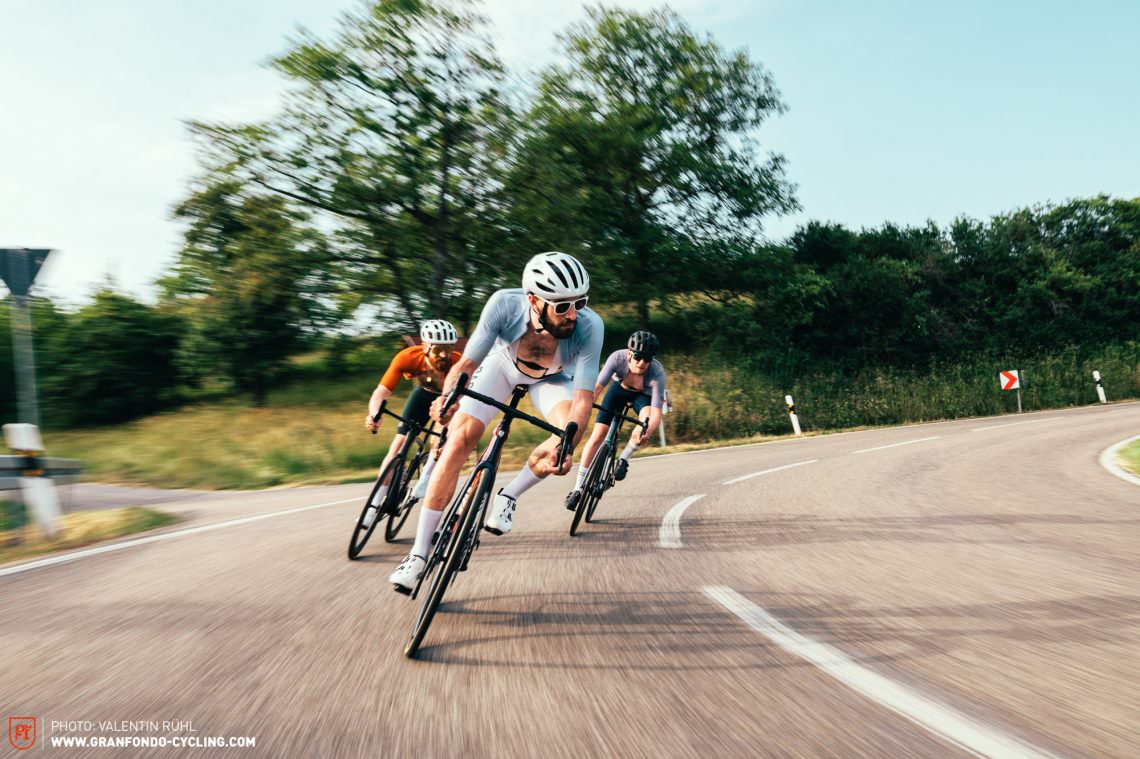
When it comes to the fastest race bikes of the season, some things don’t really need to be discussed. A few years ago there was still heated debate when it comes to disc brakes on road bikes, but the argument has settled in favour of disc brakes. That isn’t changed by the fact that the new Pinarello DOGMA F, which you will also find in this issue, still offers a rim brake-equipped build. All test bikes come with hydraulic disc brakes, nor are they available in any other way. Of course, at this price bracket, top-end electronic groupsets are used across the board. In this group test, SRAM had the upper hand with three appearances. Two bikes were equipped with Shimano DURA-ACE Di2, while Campagnolo lost out and didn’t feature at all. The average weight of our test bikes is 6.87 kg, demonstrating that a low weight has become standard in the high-end road bike segment. The heaviest bike in the test, the SCOTT Addict RC Pro, is the furthest away from the UCI minimum weight of 6.8 kg at 6.99 kg (size L). However, with a little tuning, it would have no problem falling below the limit, just like all the other test bikes. The lightest bike in the test, the Wilier Filante SLR in the Astana-Premier Tech Team Edition, is 100 g below the UCI limit at 6.70 kg (size L). Now for the painful facts: at € 8,499, the cheapest bike in the test, the SCOTT Addict RC Pro, is easily above the average price of our last road bike group test and a good € 3,600 below the average price of this group test, which sits at € 12,119. So it’s not only the fastest test we’ve ever done but also by far the most expensive.
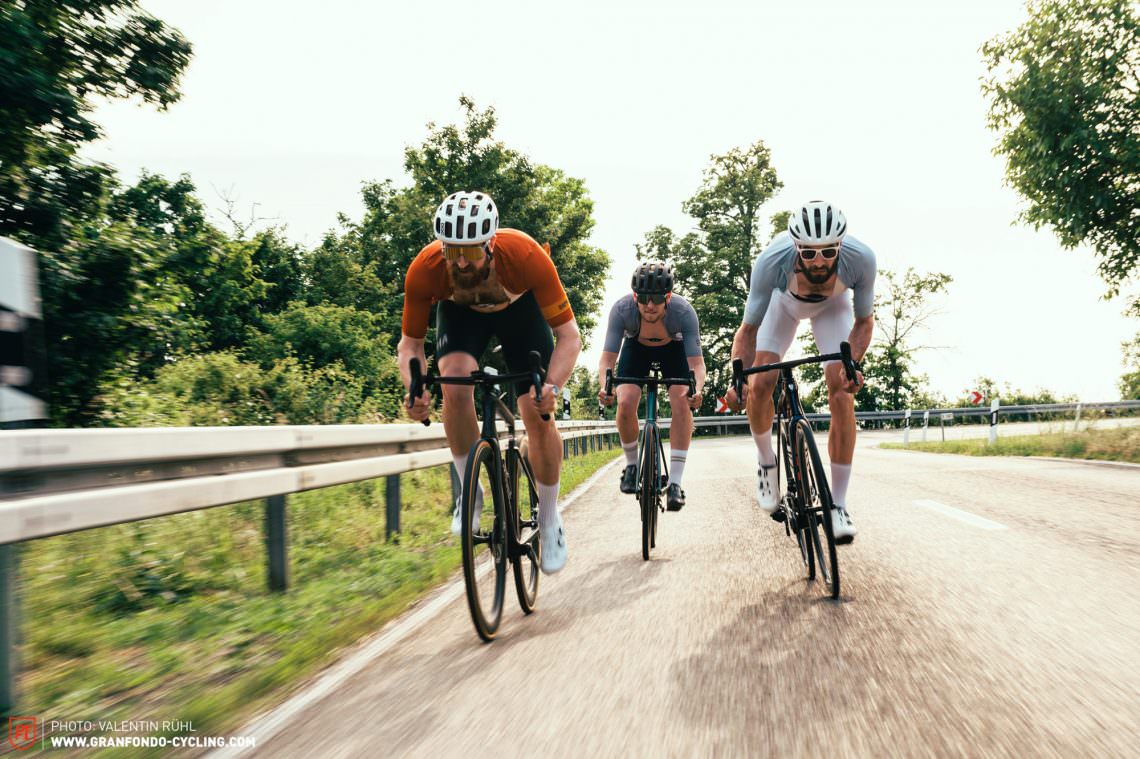
Why do many race bikes look so similar?
Road bikes are used by professional teams in racing, and these races in the professional circuit are subject to the regulations of the UCI. Among other things, the organisation determines how frames can be designed. Within these limits, manufacturers try to achieve minimum weight and maximum aerodynamics. In doing so, they approach an optimum and, inevitably, the closer they get to it, the more similar the design language becomes. That’s why almost all bikes exhibit aerodynamic tube profiles and dropped seat stays – the Trek Émonda with seat stays that run directly into the top tube is the only exception in our test. We have reached a point where most bikes seem to have exhausted the balancing act between low weight and maximum aerodynamics, at least until the next UCI rule change. Since a UCI-approved stamp on frames has long been established as an effective marketing tool (and is required for race-legal bikes) most manufacturers don’t want to invest in building additional frames that don’t comply with UCI rules, so everyone else has to ride frames that are built according to them. However, bikes that are designed and built according to the demands of the pros aren’t necessarily the best choice for everyday riders. After all, realistically only an elite group can really exploit the full potential of these bikes.

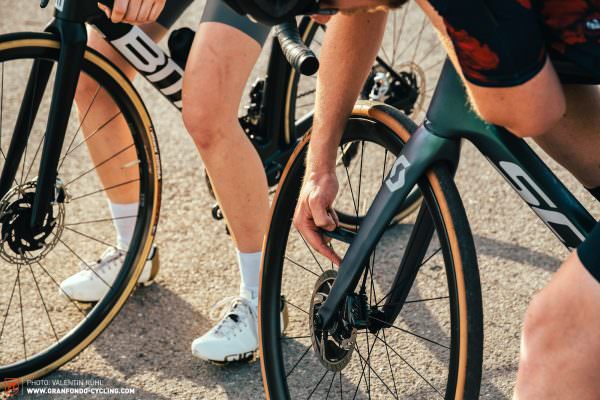
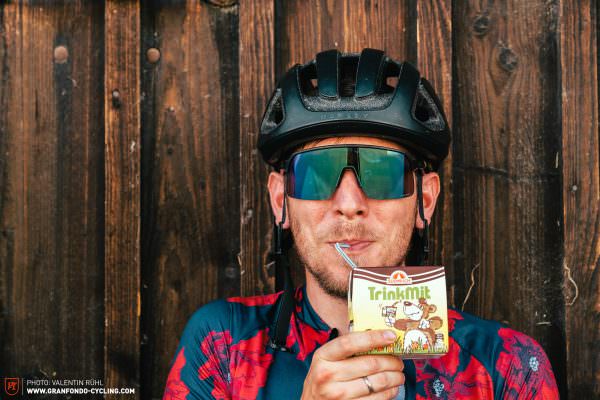
Why are the bikes in this group test so expensive?
€ 12,199 – the average price of the bikes in this comparison test is undeniably staggering. But why are these bikes so expensive? The top models in the manufacturers’ portfolios have never been bargains. In the past, this was mainly due to innovative technologies being used here, before trickling their way down to the masses i.e. to the cheaper models. In addition, top-end frames are always somewhat more difficult to build. That’s because they need to achieve better properties in terms of stiffness and damping despite using less material, requiring top-quality construction. There aren’t many factories that can produce frames of this quality, so production capacity comes at a high price. These costs are then passed on to the bike. In addition, modern frames are becoming more and more complex: disc brakes, internally routed brake lines, aero shaping and the demand for complete integration all add to the complexity of construction. Also, demand has increased immensely in recent months and years, while supply has stagnated. The market automatically responds to this with rising prices.
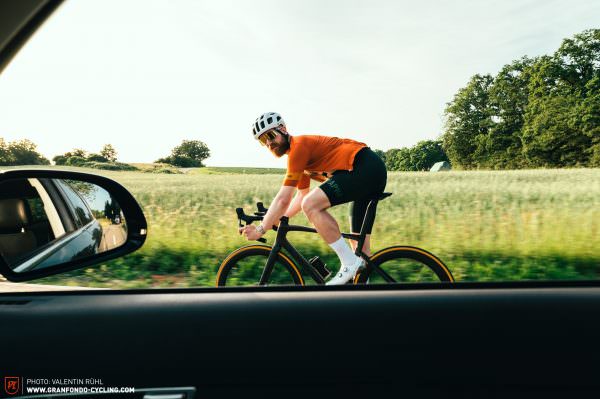

Where did we test the bikes?
The biggest races in cycling, monuments like Milan–Sanremo, Paris–Roubaix or the Tour of Flanders and the Grand Tours take place in France, Spain, Italy and of course in Belgium. Germany has nothing of equal stature to offer. But why is that? It can’t be because of the roads. The German Alps in the south can’t match the epic passes of the French Alps or the Italian Dolomites, but they are still able to separate the wheat from the chaff. On the way north, there are numerous low mountain ranges and wine-growing areas that offer everything from short and steep, to long and still steep climbs. In any case, the roads, landscape and terrain would provide everything necessary for breathtaking pro races in Germany.
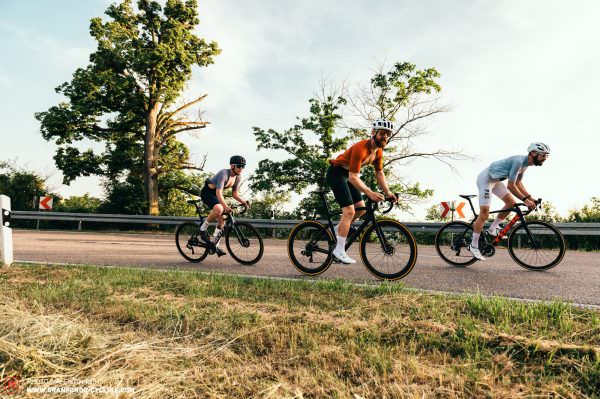
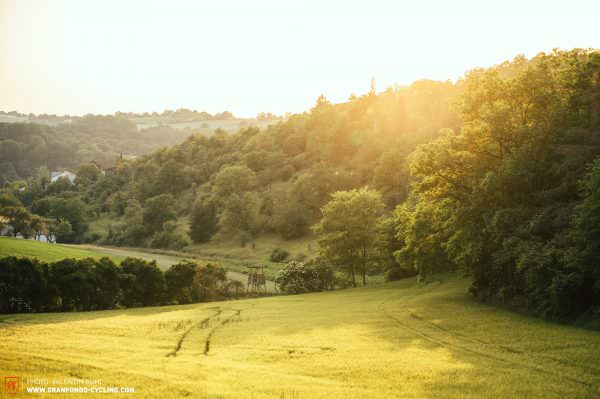
Between the Swabian Alb and the Black Forest: challenging climbs, technical descents, high-speed sections in the valleys and perennially nasty ramps. What more do you need to find the fastest speed all-rounder?
That’s why we didn’t go to faraway places for this group test but instead turned to what our home country has to offer. Our headquarters in Leonberg are located in a V formed by the Black Forest and the Swabian Alb. From here, we set out to pit the fastest race bikes of the 2021 season against each other. The test track consisted of climbs of various lengths and gradients, descents with high-speed corners and technical sections, undulating and rolling terrain and flat, fast sprints. All this on asphalt of widely differing quality. These bikes encountered everything that they have to face at the classics in France, Italy or Belgium. They will make you faster, no matter where your route takes you – as long as you stay on asphalt.
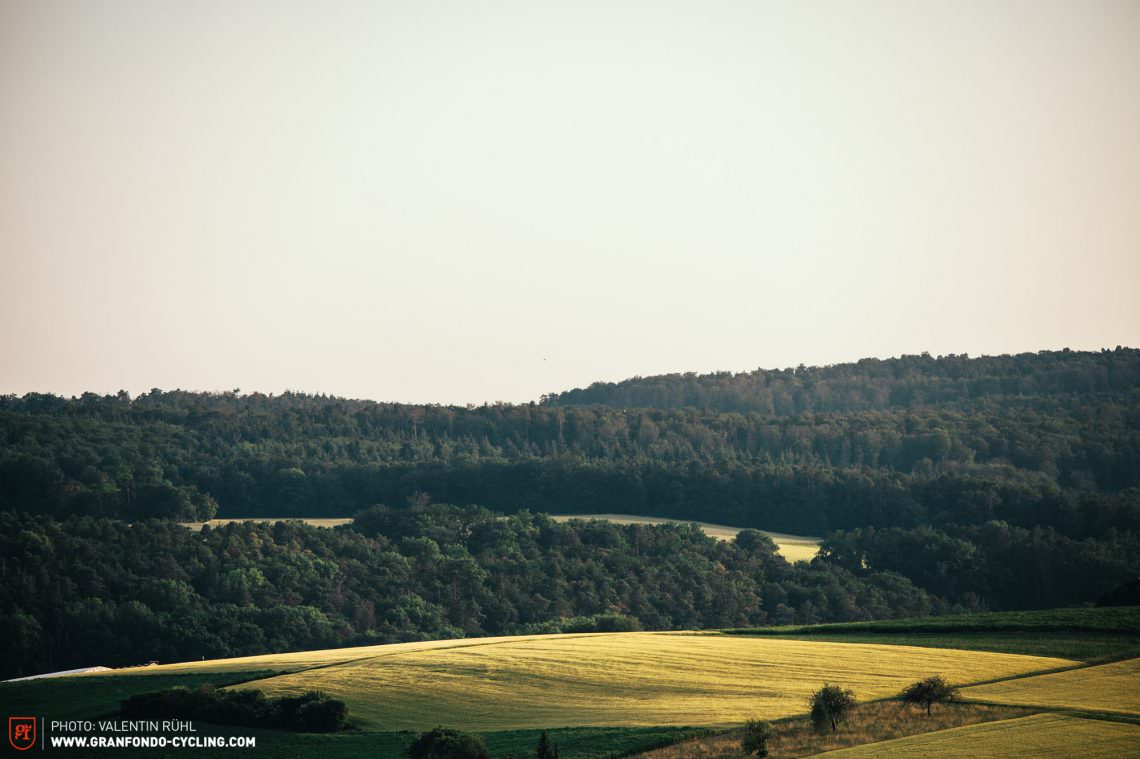
How did we test? SPORTident timing
We have always emphasised that we don’t hold much stock in laboratory tests and isolated stiffness measurements. In the past, we have always carried out the entirety of our group tests by riding the bikes, on (or sometimes next to) the asphalt. We have tested the overall system of a bike according to criteria that disregard values that can be impressive when measured in isolation but may actually be detrimental to overall performance on the road. This hasn’t changed and we didn’t go to a lab for this test either. However, we did want to find out which is the fastest race bike of the season and as perceived speed on the bike can be deceptive, we consulted the most incorruptible of all instruments: the clock! But our test winner wasn’t just supposed to be the fastest bike on the flats but would have to succeed over a varied and demanding course, just like what it might face on the pro circuit. That’s why we defined different segments, from flat to undulating to uphill and downhill. On these segments, we measured the bikes’ times and extrapolated the results to a fictitious 150 km route with just under 2,000 m climbing.

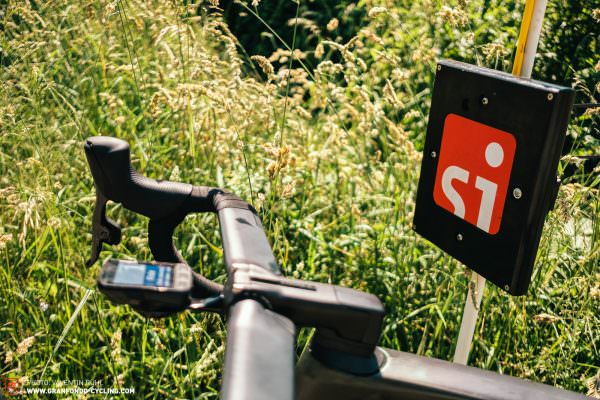
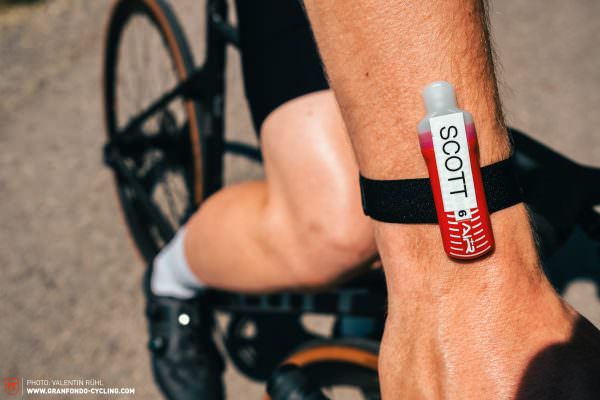
A watt is a watt and a second is a second. Power meters and clocks don’t lie. If every bike has the same power input, the fastest bike will end up on top.
We relied on professional equipment, using a timing system from SPORTident. Each segment was equipped with a transponder at the start and finish that transmitted the current time and each bike was fitted with a corresponding timing chip to register the time. Segment ridden, we could inspect to a hundredth of a second exactly how long the bikes had needed for which segment. The test team only reviewed the times at the very end of testing to avoid any subconscious bias. To limit outside variables, we tested the bikes on the different segments directly after another. This way, wind and weather conditions remained most consistent. On the first day, when we measured on the flat and undulating terrain, it was a good 30 °C, with a light gusty wind from behind. When we tested on the mountain, it was 35 °C and almost windless. In addition, each bike was ridden three times by each member of the test team on each segment. The test riders also maintained the same riding position and same average power over each segment: 200 W on the flat and undulating stage, 250 W on the mountain stage and 0 W on the downhill stage. Power values that can be realistically achieved not just by professionals but by many recreational heroes. Any bikes that didn’t come with a power meter were fitted with one to allow measurement. We calculated the average times of all sessions on the respective segments of all bikes and then extrapolated these to our fictitious 150 km route.
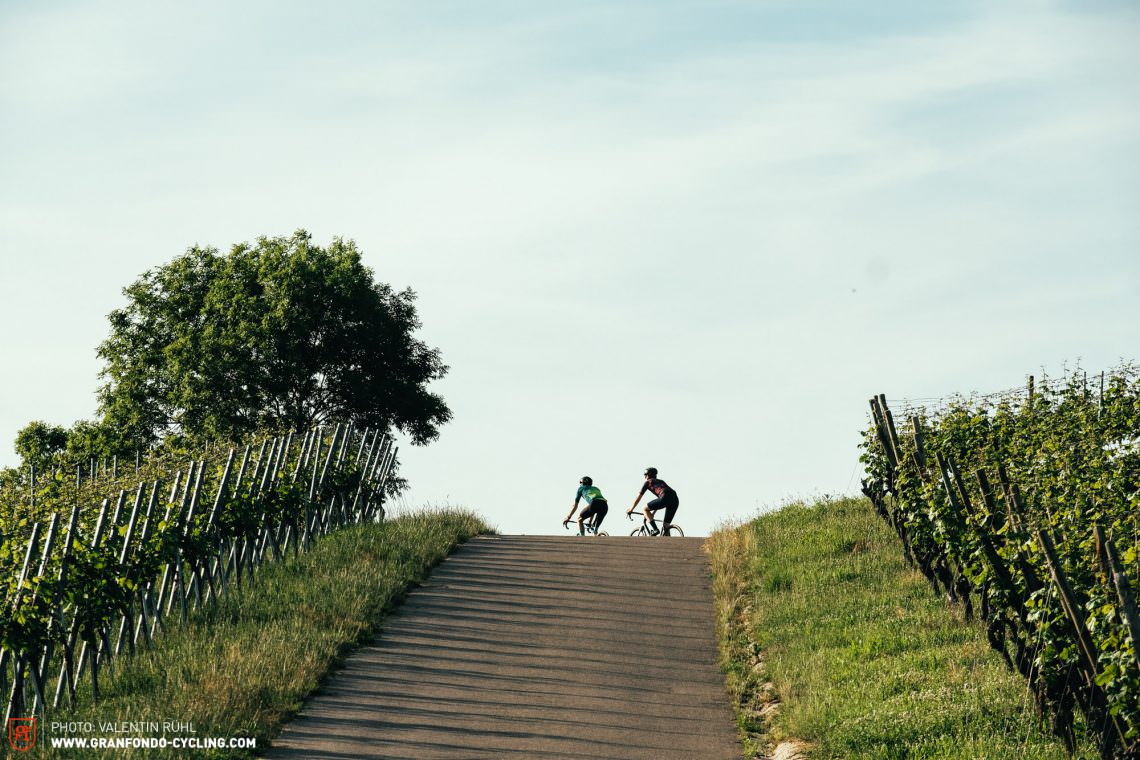
Does it all make sense?
In a group test where the similarities on paper predict that it could be an extremely close race, small things decide between victory and defeat. As such, we considered whether the way we were testing made any sense at all or whether we would end up with a flood of timings that we couldn’t interpret or that didn’t provide a clear answer in our search for the fastest race bike. To be honest, before the test we weren’t sure ourselves. But we wanted to give it a try. So we reduced outside factors and variables as much as possible. Nevertheless, we are aware that this test may be vulnerable to some inconsistencies. The gusty weather may have had some influence on the timing results and it wasn’t possible for our test team to hit the target wattage exactly to the decimal place on every run. Other potential factors include variations in readout between different power meters. On the other hand, fatigue didn’t play a role with the given wattage values and the good fitness levels of our test team.
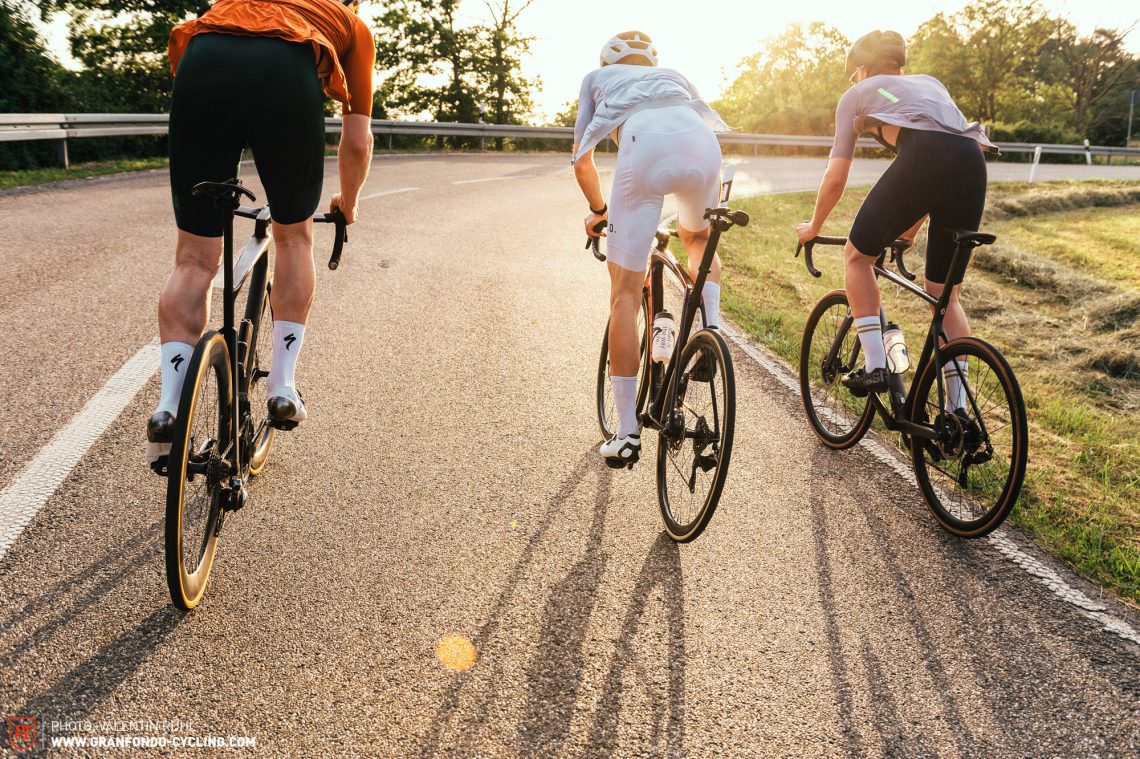
There is no one bike that is fastest in all circumstances, at all times and everywhere – but with our test winner, you have a clear advantage over everyone else in most situations.
We have to accept that this test does not cover all eventualities you may encounter on the road and therefore has certain limits. And that’s a good thing! When you test bikes in the lab, it is very easy to look at isolated values, compare them and draw supposedly logical conclusions. But in reality, these values are never isolated and environmental influences fluctuate rapidly. What would have happened in heavy rain, if one or the other bike had suddenly performed significantly worse in terms of cornering grip? What would have happened if the wind hadn’t pushed from behind but hit us head-on? What if we had significantly increased our power on the segments and some bikes had suddenly performed better at higher speeds because that’s what they were built for? These questions cannot be answered completely. Nonetheless, after our test, we are sure that no one bike is the fastest under all circumstances, at all times and everywhere. And we are equally convinced that the road bike that leaves the test as the winner will give you a clear advantage in most situations over riders who are on a different bike.
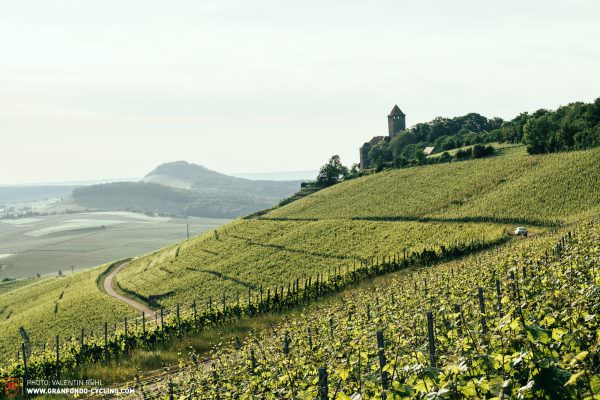

What does it depend on? The most important characteristics of a race bike
Race bikes have to be one thing above all: fast. That’s why the only criterion in this test is speed, or rather, time. The time that our test bikes needed to cover the test segments. So, while in our last comparison test, the best time on the bike was more important than the fastest time on the road, now it is precisely this that decides everything. But don’t worry: even a fast ride above the lactate threshold can be a hell of a lot of fun. While a TT bike is uncatchable on the flats and an ultralight 5 kg climbing bike leaves everyone behind in the mountains, the fastest race bikes of the season have to manage the balancing act and cover both areas in the best possible way. They have to be speed all-rounders in order not to be left behind anywhere. But just because we use the time on the clock as the only criterion for victory or defeat in this group test, doesn’t mean that other factors don’t play a role.
Race bikes are made for racing. The readout on the clock makes the difference between victory and defeat in this test.
Thus, handling determines how unerringly a bike can be manoeuvred over the road. It must find the right balance between agility and smoothness. To be fast for a long time, a bike also has to get up to speed quickly and maintain the speed it has built up efficiently, uphill, on the flats and downhill. Control and confidence determine how close the rider dares to get to the limit: the more control and confidence, the more speed you can take through a technically challenging section. In addition, comfort also plays an important role when it comes to speed. On race bikes, the riding position is particularly aggressive, low and stretched. That makes you fast, but if there is no comfort and the bike lets you feel every little stone and pothole in your backside and hands so that you have to stop after five kilometres because of the pain, then even the commuter on the folding bike will overtake you again. What else should there be? Riding pleasure, of course. Most of you don’t earn a cent from cycling and do it for pure pleasure. Just because a bike wants to be fast doesn’t mean it has to be a bitchy diva. You’re fastest when you get into a flow and that usually happens when a bike is just fun – no matter what speed you’re at. Yes, only the fastest time counts in this group test. But in order to achieve that, a bike inevitably has to meet other criteria too.
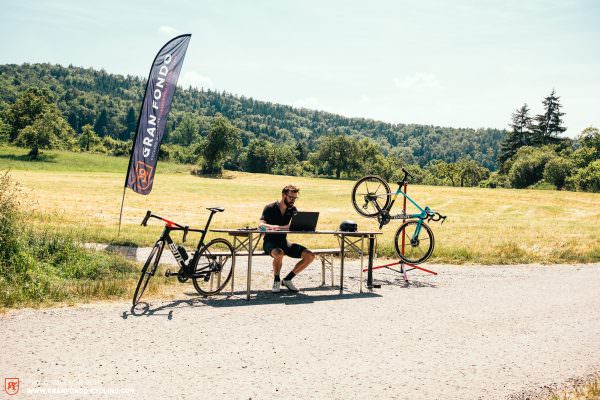
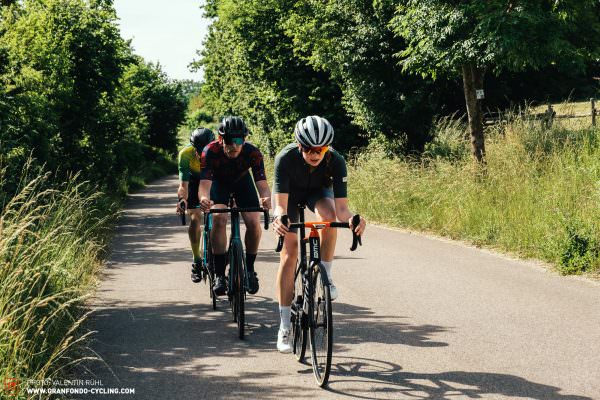
Who did the testing?
In the search for the fastest race bike of the 2021 season, the members of our test team came from very different backgrounds. Even if one or the other actually feels much more comfortable on a gravel bike, in the end, no one could resist the charms of the fastest bikes on the planet. The good thing is that each individual pays attention to different characteristics of the test bikes. But faced with the clock, all members of our test team are equal and the test results are irrefutable. Here you can find out what counts for them:

GRAN FONDO editor-in-chief, gravel aficionado and sprinter
When I leave the gravel bike for a fast lap on asphalt, I like to pursue my second great passion: the local town sign sprint! What counts for me here is uncompromising acceleration.
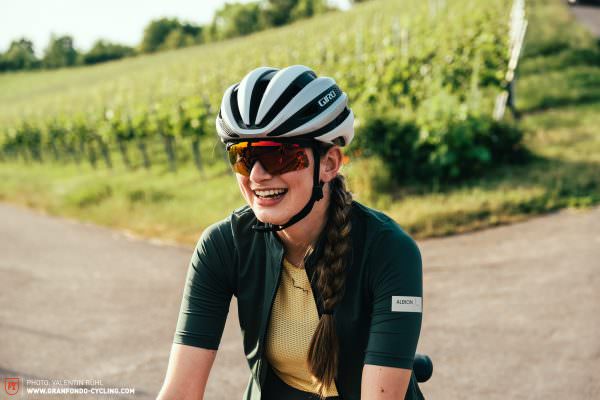
PhD student in molecular medicine, vanlifer, outdoor enthusiast
I explore Europe in my van and stop wherever I like. Stopped somewhere, I prefer to use a bike to get to know the area. The faster the bike, the more I can discover.

GRAN FONDO editor, Gravel instead of toothpaste, proud dad
For me, it’s all about the perfect balance of comfort and sportiness. But when my family takes a nap, I also want a quick fix on the bike. For that, I swap the gravel bike for the WorldTour weapon.
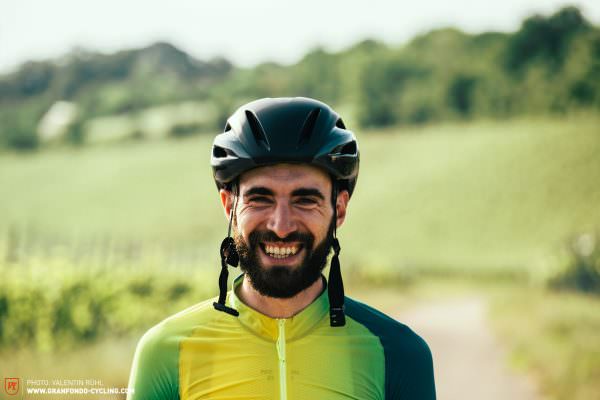
GRAN FONDO editor, 2% body fat, yogi and bike racer
When I train 20 hours a week, I also want my bike to convert every watt into propulsion. To be able to go to the limit, I need to have confidence in my bike.
The tops and flops of our group test
In such a high-end test field, it’s the details that make the difference between victory and defeat. In this price bracket, certain things can be taken for granted that we would otherwise laud out on cheaper bikes. On the other hand, small weaknesses that you would overlook on entry-level bikes are particularly hard to ignore on the crème de la crème of race bikes. Here you will find the best tops and the worst flops of the fastest race bikes of 2021.
Tops

The Specialized S-Works Tarmac SL7 sets the benchmark in this comparison test with its handling. It combines a smooth ride with a high level of directness and razor-sharp precision, without overtaxing newcomers.
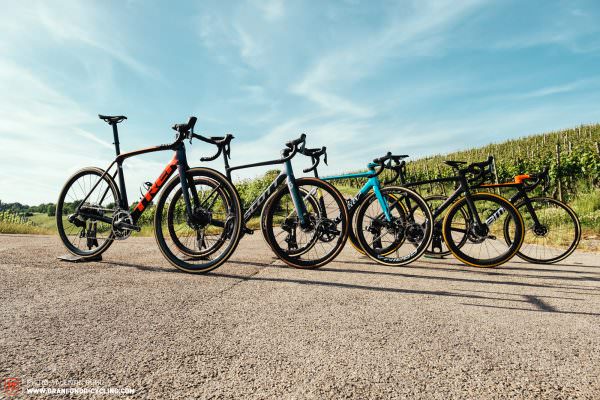
All the bikes in this group test are of the highest level and avoid any serious flaws or even safety-related problems.
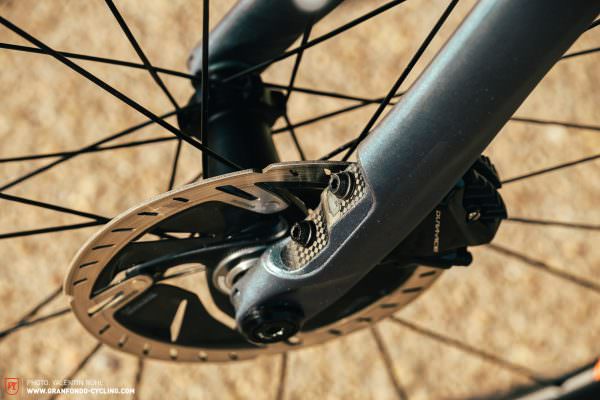
The front brake calliper of the Addict is equipped with a 160 mm brake disc and attached via a direct-mount design. To hide the bolts at the front of the fork, they have been recessed and are concealed with a cover. Clean look, great aerodynamics.
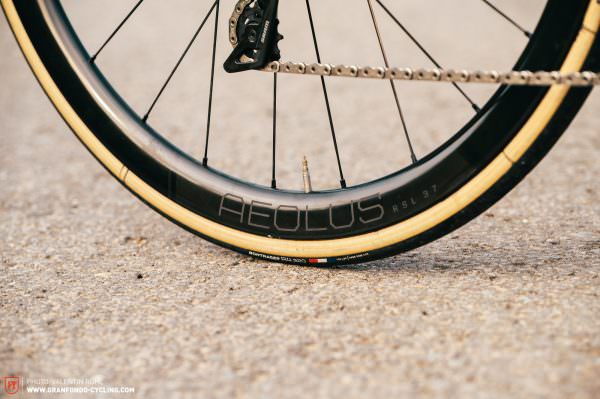
The Bontrager Aeolus RSL 37 wheels of the Trek Émonda SLR 9 execute a good mix of first-class climbing performance and good aerodynamics. They suit the bike’s character well!

Although all the test bikes have a pretty sleek cockpit, the Teammachine still stands out. The handlebar-stem unit could not be more svelte and makes a statement with its shape and bright red colour.
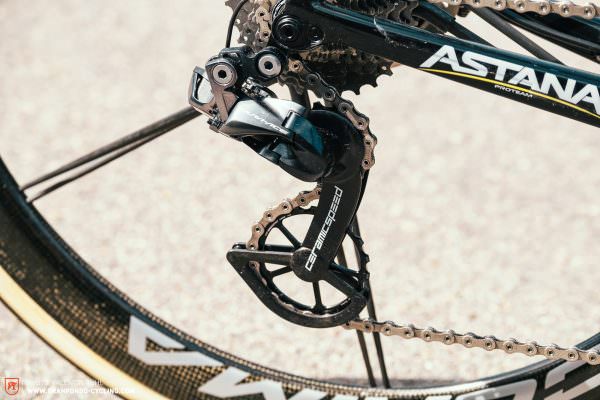
You can tell that the Filante SLR is a real pro-peloton bike and is looking for the last few percent everywhere. It doesn’t just have CeramicSpeed jockey wheels but also comes with a bottom bracket from the Danish high-end brand.
Flops
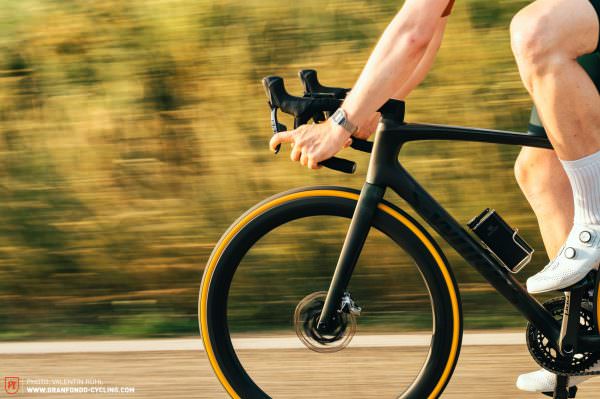
The constant rattling of the SRAM shifters isn’t appropriate for a groupset in this price range. You will find yourself constantly keeping your fingers on the shifters on rough terrain to prevent it.
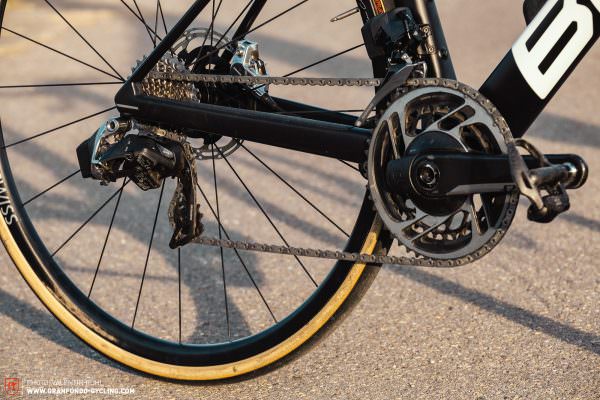
Yes, of course! But how much power is that? Three of the five test bikes come without a power meter as standard. That is absolutely incomprehensible at this price.
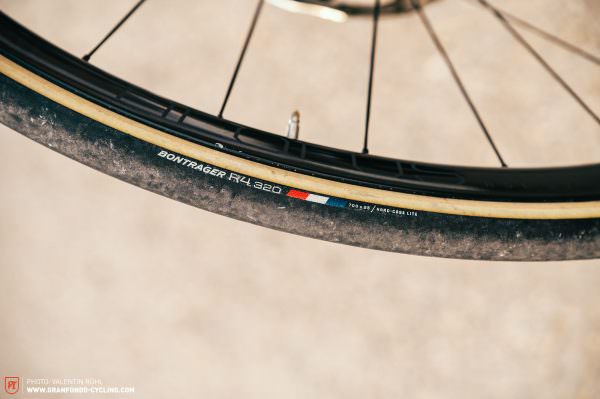
The Émonda’s Bontrager R4 320 tires tend to lose traction under braking, which doesn’t help confidence when cornering.
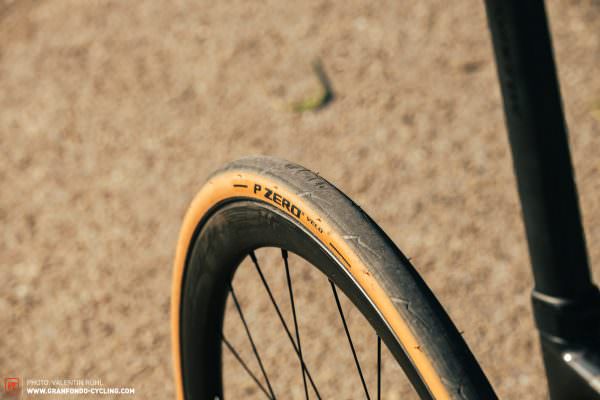
The Pirelli P ZERO 700 x 28C tires are a full 31 mm wide on the Syncros Capital 1.0 35 wheels of the SCOTT Addict RC Pro. This means that the bike has by far the widest tires in the test and would also be well-equipped for all-road use. However, what is good for comfort robs the bike of uncompromising racing performance.
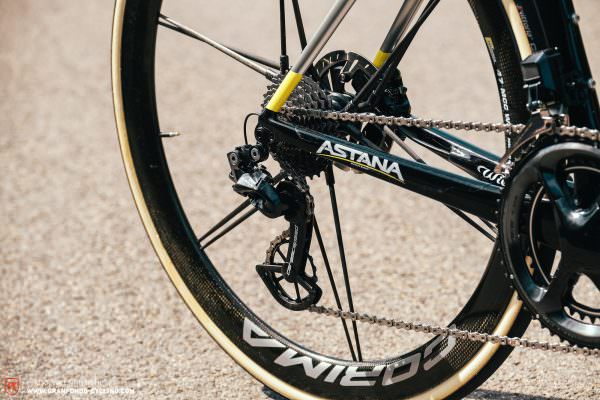
OK, it’s our fault. We were looking for the fastest race bike. And for real racers, the gear ratio of 53/39 t chainrings and 11–30 t cassette might be just right. For us, however, it is simply too tall for anything beyond undulating terrain.
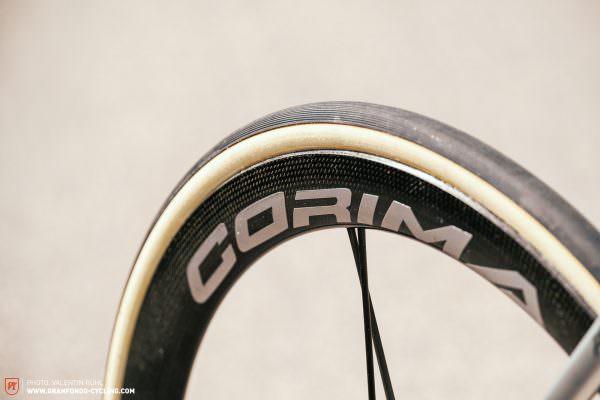
Tubular tires may still be the first choice for the pros and we admit that we dig their characteristic handling. But for everyday use, they simply entail too many disadvantages.
The fastest road bike of 2021
Specialized S-Works Tarmac SL7
Mark Cavendish sprinted to four wins in the Tour de France this year on the Tarmac SL7 and has now equalled Eddy Merckx’s record of 34 Tour stage wins. But in this group test, the bike doesn’t have to get involved in a sprint: it rolls to a solo victory with a breakaway minutes ahead of the peloton and can raise its arms in celebration 100 m before the finish line! The Tarmac SL7 is not the fastest bike uphill or downhill, but it fends off all attacks and stays like a shadow on the heels of the fastest bikes in these categories, only to then exploit its outstanding aerodynamics on the flats and in undulating terrain and irrevocably pull away. However, the most impressive thing about the Specialized isn’t its sheer speed but the way it brings it to the asphalt. No other bike in the test gets absolute precision and directness packaged in such a controllable way. This makes the bike an absolute weapon in professional hands, without throwing off beginners and less experienced speed junkies like a rodeo bull. That’s why there is no doubt after our test: the Specialized S-Works Tarmac SL7 is the fastest race bike of the 2021 season! It takes 5 h 40 m 26 s to complete our fictitious 150 km test route with almost 2,000 m of climbing, which corresponds to an average speed of 26.4 km/h.
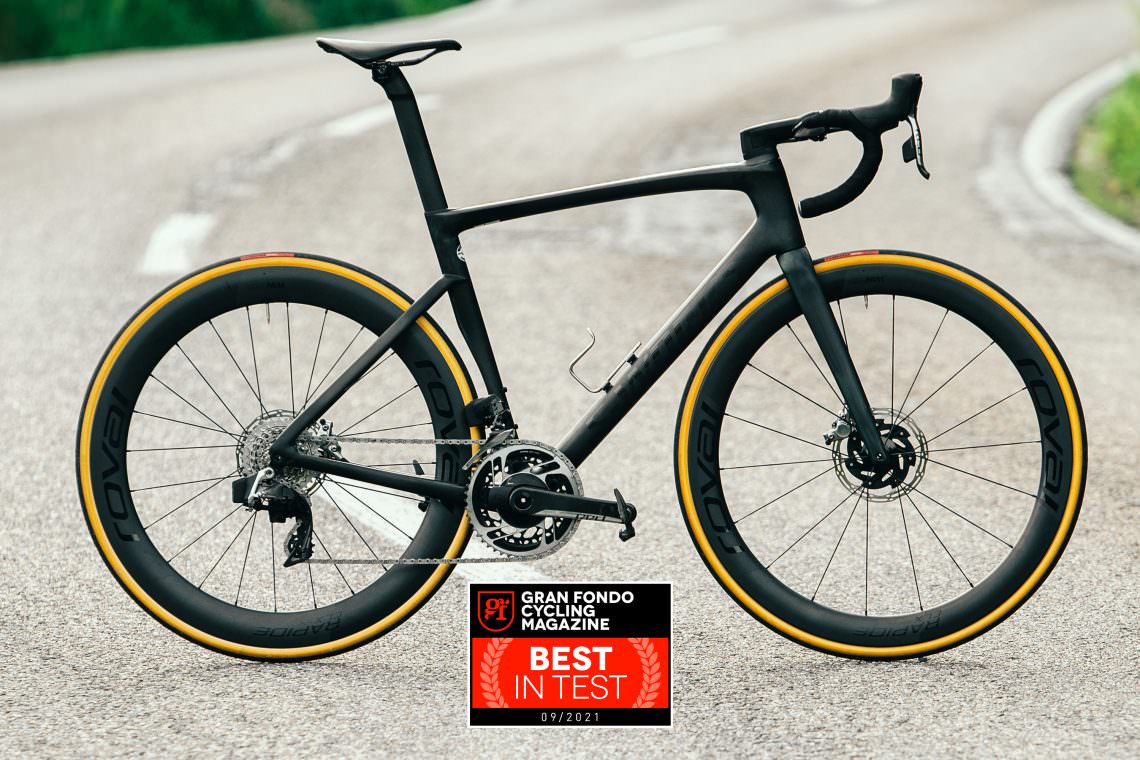
Hot on its heels …
The BMC Teammachine SLR01 ONE
This means that the Specialized is just under 4 minutes ahead of its fiercest rival on this route. The BMC Teammachine SLR01 ONE crosses the finish line with a time of 5 h 44 m 48 s and an average speed of 26.1 km/h. The BMC bike also benefits from its wind-cheating design. It is the only bike that can keep up with the Specialized S-Works Tarmac SL7 on flat and undulating terrain, despite its less aerodynamic DT Swiss PRC 1100 DICUT Mon Chasseral wheels. We can well imagine that with a deeper wheelset it would have been really close between the BMC and Specialized! The BMC’s main issue is that it fell short of our expectations on the mountain, where it lost time to the fastest climbers.
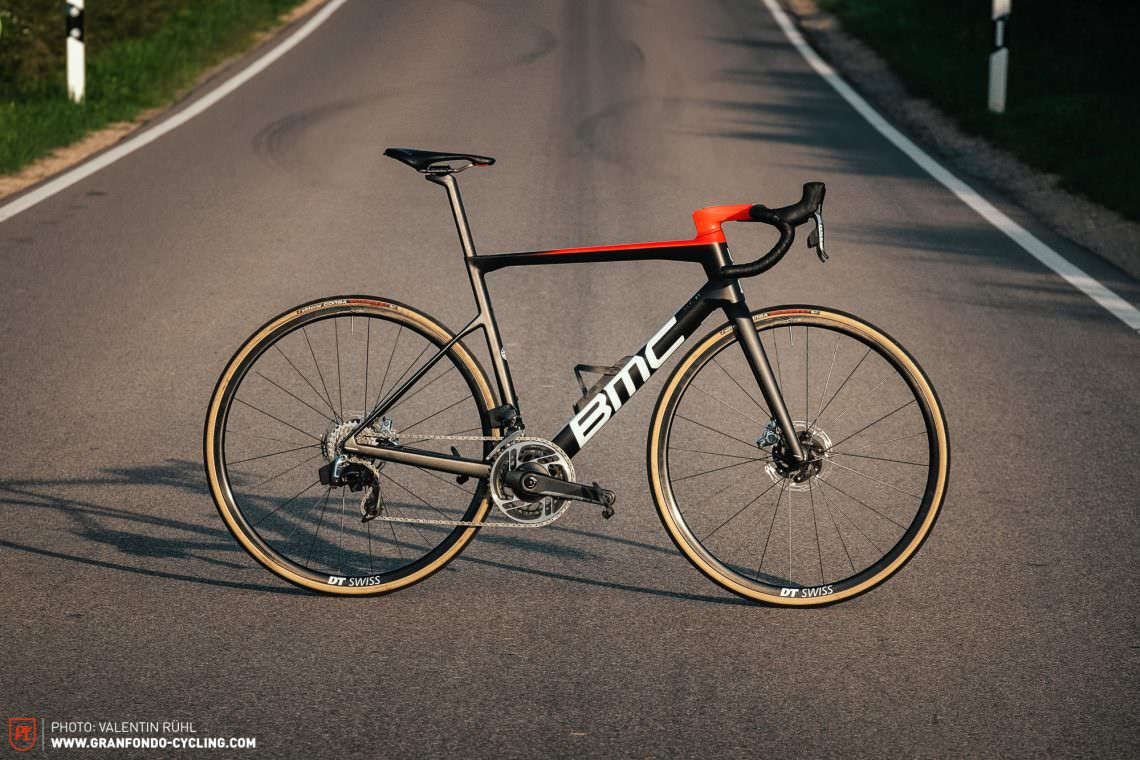
… and here comes the rest of the pack
All the bikes in this test are mercilessly fast and have already taken victories in the WorldTour this year. As such, it wouldn’t do any of the bikes justice to be labelled as losers. No matter which of the bikes Tadej Pogačar would have ridden in this year’s Tour de France, he would have kept the competition at bay on any of them. And so, once again, we do something new and refrain from picking a loser. While the Specialized S-Works Tarmac SL7 rolls into the finish alone, followed by the BMC Teammachine SLR01 ONE, the rest of the peloton isn’t far behind. The SCOTT Addict RC Pro (5 h 47 m 11 s, 25.9 km/h), Trek Émonda SLR 9 eTap (5 h 49 m 56 s, 25.7 km/h) and Wilier Filante SLR (5 h 48 m 05 s, 25.8 km/h) can only be reproached for not getting the overall package together at quite the same level as the Tarmac SL7. For example, the SCOTT Addict RC Pro loses ground on the flats, which is probably due to the extremely wide tires that you wouldn’t find in the pro peloton except perhaps for the cobbled classics. In contrast, Trek Émonda SLR 9 and Wilier Filante SLR fall short of expectations, especially on the uphills.
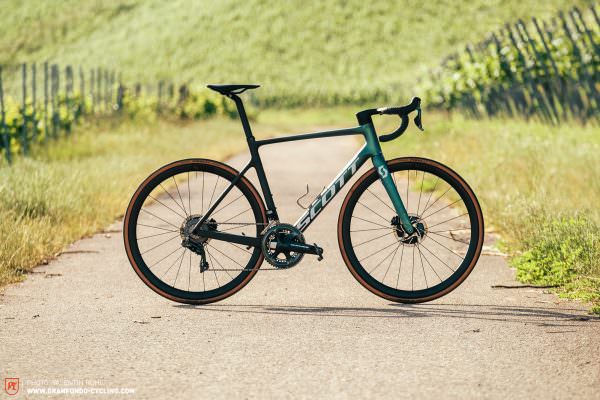
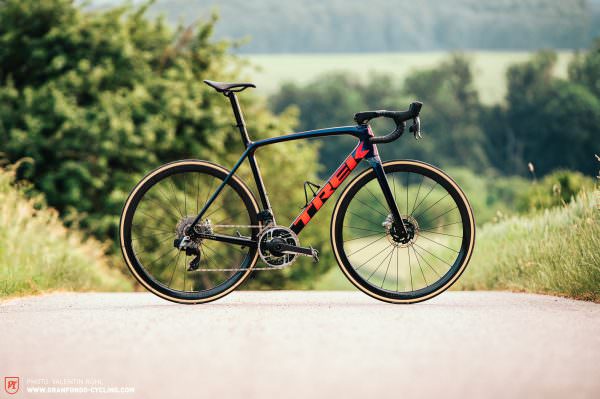
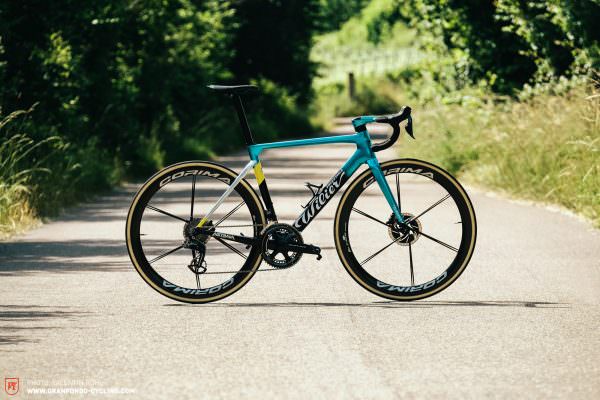
Wipe off your sweat, smooth down your hair and take a deep breath: so that was the fastest group test in the history of GRAN FONDO. Before it gets even faster, the UCI will first have to change their regulations. Enjoy the bike tests of the fastest race bikes of the year! Don’t let the timings influence your purchasing decision too much and listen to what speaks to your taste and needs. In the end, every one of the five bikes is damn fast and attracts attention at the ice cream parlour. Fun is fast!
Did you enjoy this article? If so, we would be stoked if you decide to support us with a monthly contribution. By becoming a supporter of GRAN FONDO, you will help secure a sustainable future for high-quality cycling journalism. Click here to learn more.
Words: Photos: Valentin Rühl







